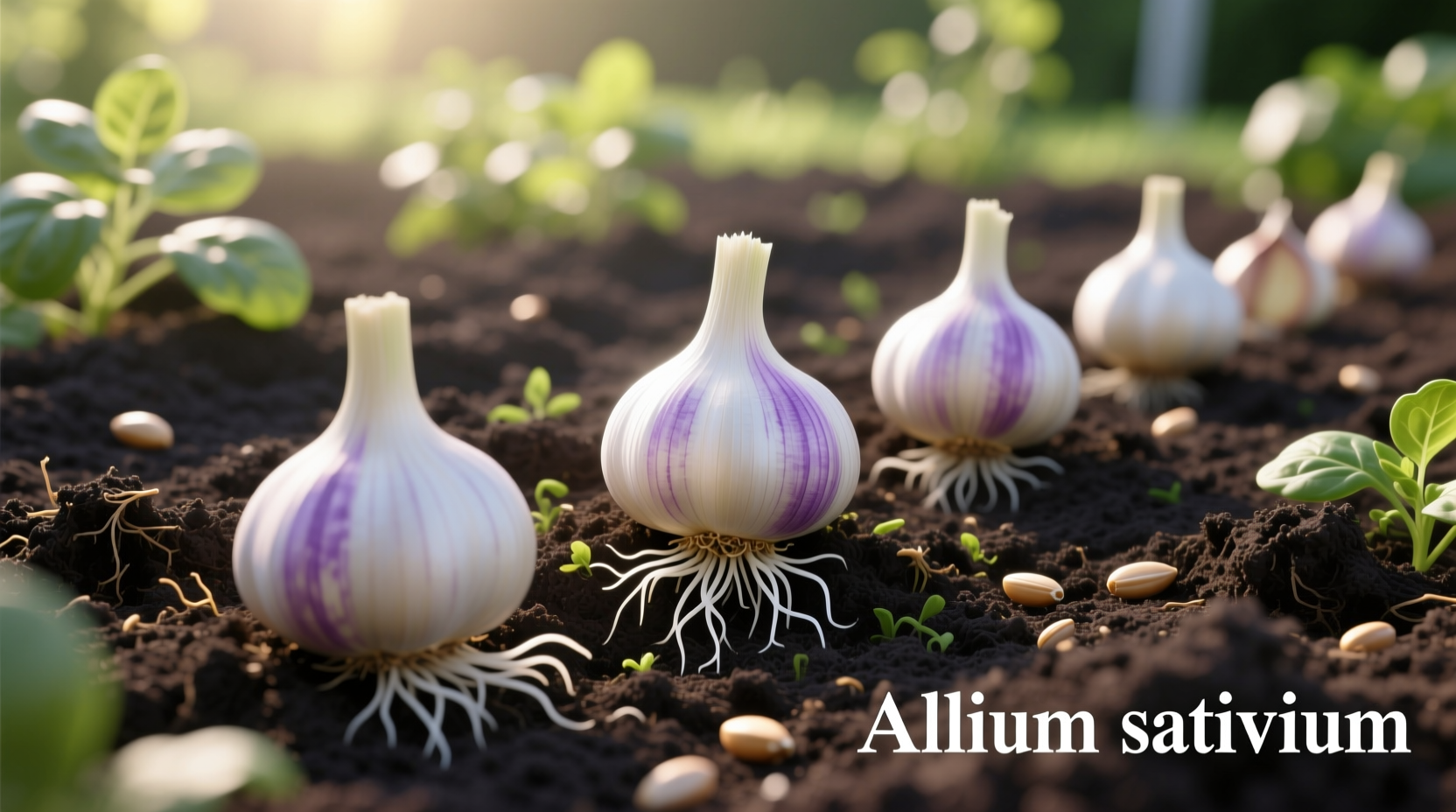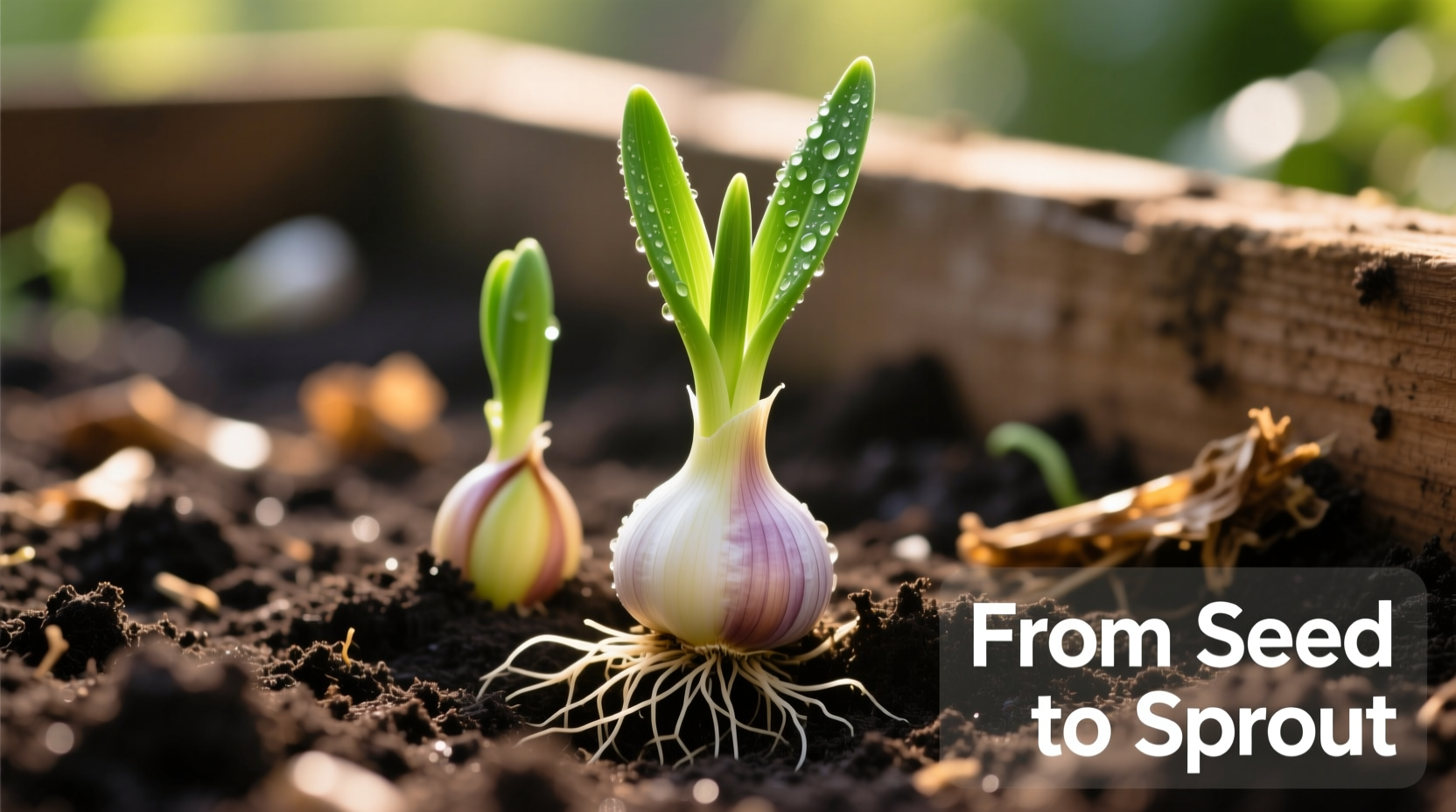Discover exactly how to grow garlic from planting to harvest with this comprehensive guide. Whether you're a beginner gardener or looking to improve your yields, you'll learn the precise timing, soil requirements, and care techniques that produce plump, flavorful bulbs every season. Stop wasting money on store-bought garlic and start cultivating your own aromatic harvest with confidence.
Choosing Your Garlic Variety: Hardneck vs. Softneck
Selecting the right garlic variety is your first critical decision. Hardneck types thrive in colder climates and produce edible flower stalks (scapes), while softnecks adapt better to warmer regions and braid easily for storage. Understanding these differences prevents planting failures before you begin.
| Characteristic | Hardneck Garlic | Softneck Garlic |
|---|---|---|
| Climate Suitability | Cold winters (USDA zones 1-7) | Mild winters (USDA zones 7-10) |
| Cloves Per Bulb | 4-12 large, uniform cloves | 12-40 smaller, irregular cloves |
| Storage Life | 5-8 months | 9-12 months |
| Unique Feature | Produces edible scapes | Braiding capability |
Seasonal Timeline: Your Month-by-Month Growing Roadmap
Successful garlic cultivation follows a precise seasonal rhythm. This timeline reflects data from the University of Minnesota Extension based on 20 years of field trials across diverse climates:
- September-October: Prepare soil with 3 inches of compost and plant cloves pointy-end up at 2-inch depth
- November: Apply 4-6 inches of straw mulch after soil cools to 40°F (4°C)
- March-April: Remove mulch when green shoots emerge, apply nitrogen-rich fertilizer
- May: Cut scapes on hardneck varieties when curls form (boosts bulb size by 25%)
- June-July: Monitor leaf color - harvest when 40% yellowing occurs
Soil Preparation: The Foundation of Flavorful Bulbs
Garlic demands well-draining soil with specific nutritional balance. According to Oregon State University's Organic Growers Guide, optimal conditions include:
- pH between 6.0-7.0 (test with USDA soil testing kit)
- Organic matter content of 3-5% (achieved through compost amendment)
- Avoid fresh manure which causes malformed bulbs
- Raised beds improve drainage in clay soils

Planting Techniques That Maximize Bulb Size
Professional growers achieve larger bulbs through precise planting methods verified by Cornell University's Vegetable Program:
- Use the largest cloves from your seed stock (top 25% in size)
- Space cloves 4-6 inches apart in rows 12-18 inches apart
- Plant at 2-inch depth in heavy soils, 3 inches in sandy soils
- Water immediately after planting only if soil is dry
- Apply mulch after ground freezes to prevent heaving
Seasonal Care: Avoiding Common Mistakes
Gardeners often fail by misunderstanding garlic's seasonal needs. The University of Illinois Extension identifies these critical care points:
- Spring feeding: Apply balanced fertilizer when shoots reach 6 inches (avoid late feeding)
- Water management: Provide 1 inch/week until bulbing begins, then reduce to prevent rot
- Weed control: Hand-pull weeds - garlic's shallow roots can't compete
- Pest prevention: Rotate crops annually to avoid white rot and nematodes
Harvesting and Curing: Preserving Your Crop
Improper harvesting destroys months of work. Follow these evidence-based techniques from the Utah State University Extension:
- Harvest when 40% of leaves turn yellow (typically June-July)
- Dig carefully with a fork to avoid bulb damage
- Cure in dark, well-ventilated area at 75-85°F (24-29°C) for 3-4 weeks
- Trim roots and tops after curing completes
- Store at 32-40°F (0-4°C) with 60-70% humidity
Troubleshooting Common Growing Problems
Address these frequent issues using solutions verified by agricultural extensions:
- Small bulbs: Caused by late planting, poor soil, or inadequate spacing
- Moldy cloves: Indicates excessive moisture during storage or curing
- Yellowing leaves: Could signal nitrogen deficiency or overwatering
- No scapes: Normal for softneck varieties; hardnecks may skip if stressed
Frequently Asked Questions
Can I grow garlic in containers?
Yes, use containers at least 8 inches deep with drainage holes. Fill with potting mix amended with compost. Plant cloves 2 inches deep and 4 inches apart. Container-grown garlic requires more frequent watering but follows the same seasonal timeline as garden-planted garlic.
Why did my garlic produce small bulbs?
Small bulbs typically result from late planting, overcrowding, poor soil nutrition, or insufficient sunlight. Plant cloves in fall (4-6 weeks before first frost), space 4-6 inches apart, and ensure 6+ hours of daily sun. Using the largest cloves for planting also significantly increases bulb size.
How do I know when garlic is ready to harvest?
Harvest when 40% of the leaves have turned yellow or brown, typically in late spring or early summer. Check by gently digging around a bulb - mature garlic will have distinct, plump cloves filling the wrapper. Harvesting too early yields small bulbs; waiting too long causes cloves to separate and reduce storage life.
Can I use grocery store garlic for planting?
While possible, grocery store garlic often produces disappointing results. Commercial garlic may be treated with sprout inhibitors, and varieties might not suit your climate. For best results, purchase seed garlic from reputable garden suppliers who offer varieties adapted to your USDA hardiness zone.











 浙公网安备
33010002000092号
浙公网安备
33010002000092号 浙B2-20120091-4
浙B2-20120091-4